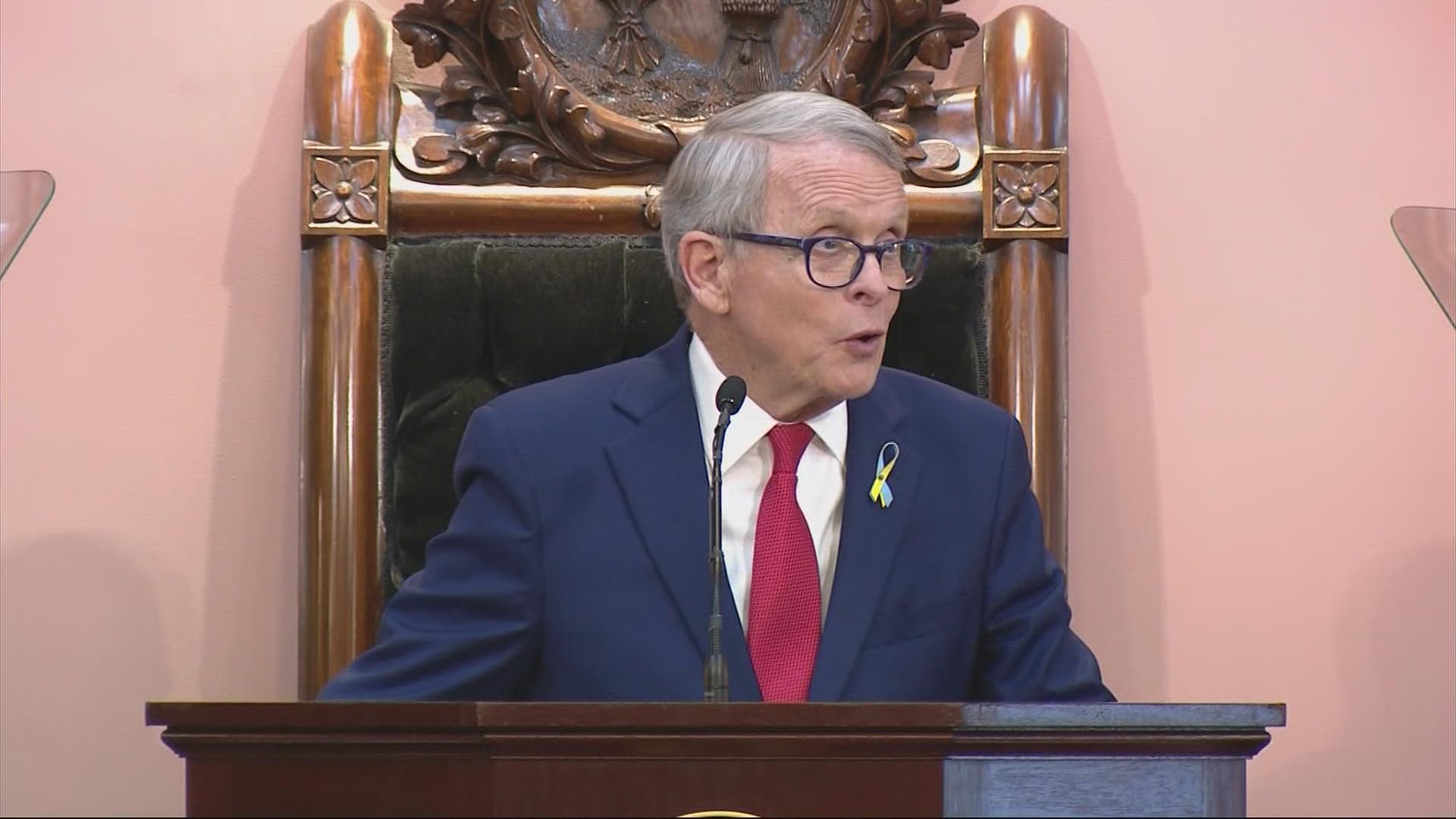COLUMBUS, Ohio — Ohio Governor Mike DeWine delivered his State of the State address on Wednesday; the first since the beginning of the COVID-19 pandemic and DeWine’s second during his first term as governor.
DeWine's last address was on March 5, 2019, roughly one year before the first COVID-19 cases were reported in Ohio and as the nation began an uphill battle to ward off deaths, business closures, evictions and unemployment at the hands of the pandemic.
Despite a tumultuous three years, DeWine emphasized this: “The state of our amazing state is strong.”
In recent years, state leaders have worked to double investments in Ohio’s home visiting programs, during which professionals meet with young and expecting parents to provide training services and parenting skills. Simultaneously, leaders have invested in services to ensure fewer Ohio children are exposed to opiates and lifelong brain damage from toxic lead paint.
As medical centers filled with patients amid the COVID-19 pandemic, leaders worked to improve access to telehealth services and mental health counseling. DeWine signed House Bill 122 in December to expand insurance coverage of telehealth, a law that officially took effect Wednesday.
Lawmakers also pushed forward a goal to provide all Ohioans with necessary broadband and access to proper education to prepare residents for the future.
DeWine detailed efforts to double down on support for law enforcement, including a $125 million investment to public safety and first responder initiatives. The promise comes on the heels of an unprecedented spike in violent crime in 2021.
Ohio will soon become a global leader in science, technology and medicine, DeWine said. Earlier this year, Intel announced a $20 billion investment in Ohio with the completion of two new chip manufacturing facilities, set to open in Columbus in 2025.
Those facilities alone are expected to generate 20,000 jobs in Ohio. In total, high-tech innovation districts in Columbus, Cleveland and Cincinnati are set to generate some 60,000 jobs over the next 10 years.
During the pandemic, state spending was cut by $1.2 billion. Currently, Ohio’s taxes are the lowest reported in 40 years.
“To think we have done all these things – all of them – during a once in a hundred years pandemic. We did it all together,” DeWine said.
But DeWine said the work isn’t done there.
Going forward, DeWine said he hopes to focus on an Ohio where mental illness is treated as a health issue and not a crime, where highway safety is a priority, where children have proper access to mentors, and where all Ohioans have access to education, reliable broadband, employment opportunities and more.
A scholarship/ mentor program currently in the works would ensure every child in the state has the necessary financial support to attend college or technical school.
In terms of public safety, DeWine pointed to a proposed bill that would increase penalties for offenders who continue to carry guns.
"If we remove this small group of dangerous offenders from our streets, the violent crime in our neighborhoods will be reduced dramatically, citizens who live there will be safer, and lives will be saved," said DeWine.
Additionally, a commission that studied police training is recommending a permanent funding source that would require peace officers and troopers to complete at least 40 hours of annual training.
DeWine finished with a nod to Bengals quarterback Joe Burrow’s speech ahead of the AFC Championship: “Ohio is making some noise and people are going to have to pay attention to us and we are, in fact, coming for it all.”
You can watch in the player below:

